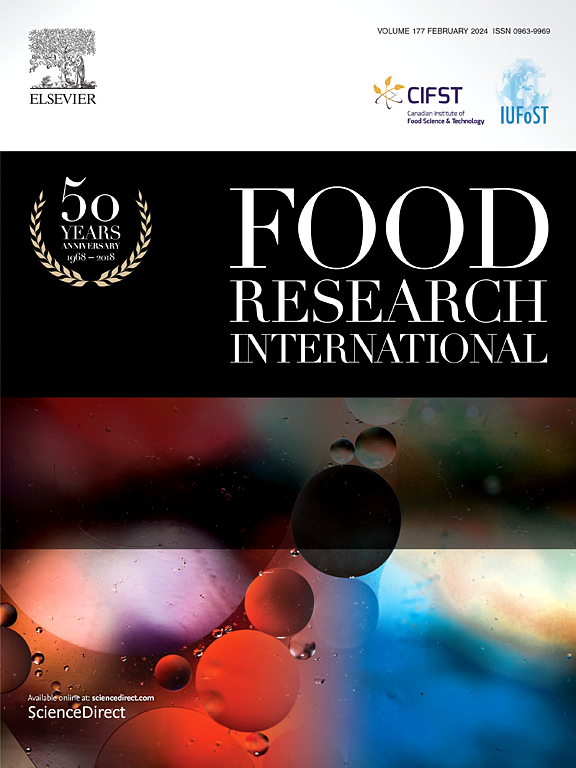Dissecting the microbial, physicochemical, and flavor dynamics of core and peel layers in Houhuo Daqu: Insights into quality regulation
IF 7
1区 农林科学
Q1 FOOD SCIENCE & TECHNOLOGY
引用次数: 0
Abstract
Houhuo Daqu (HHD) exhibits significant heterogeneity between its core and peel layers, yet their differences remain underexplored. This study integrates metagenomic sequencing and electronic sensory technologies to compare the physicochemical properties, microbial communities, and flavor profiles of HHD's core and peel. Results reveal distinct microbial communities and diversity between the layers. Both are dominated by bacteria (>90 % relative abundance). The core shows significantly higher relative abundance of Bacillus licheniformis, Bacillus haynesii, and Bacillus paralicheniformis, while the peel has elevated levels of Streptomyces sp. NHF165, Pantoea agglomerans, and Lactiplantibacillus plantarum. Bacillus licheniformis is linked to acetic acid biosynthesis. Flavor analysis indicates both layers are rich in pyrazines, contributing to HHD's distinctive aroma. Enzyme activities differed markedly between the core and peel. Structural equation modeling, regression, and ENVFIT analyses show that amino acid nitrogen directly influences enzymatic activity and indirectly affects it by shaping microbial community and diversity. Additionally, amino acid nitrogen significantly impacts HHD's taste and aroma, modulated by starch and ash content. These findings highlight amino acid nitrogen as a key factor for controlling HHD quality in future production.

厚活大曲中果核和果皮的微生物、理化和风味动态分析:质量调控的启示
后火大曲(HHD)在核心层和剥离层之间表现出显著的异质性,但它们之间的差异尚未得到充分的研究。本研究结合宏基因组测序和电子传感技术,比较了HHD果核和果皮的理化性质、微生物群落和风味特征。结果显示不同的微生物群落和不同层之间的多样性。两者都以细菌为主(相对丰度为90%)。果核中地衣芽孢杆菌、海氏芽孢杆菌和副衣芽孢杆菌的相对丰度显著高于果皮,而果皮中Streptomyces sp. NHF165、Pantoea agglomerans和plantibacillus plantarum的相对丰度显著高于果皮。地衣芽孢杆菌与醋酸生物合成有关。风味分析表明,这两层都含有丰富的吡嗪,这有助于HHD独特的香气。果核和果皮的酶活性差异显著。结构方程模型、回归和ENVFIT分析表明,氨基酸氮直接影响酶活性,并通过塑造微生物群落和多样性间接影响酶活性。此外,氨基酸氮显著影响HHD的口感和香气,受淀粉和灰分含量的调节。这些发现强调了氨基酸氮在未来生产中是控制HHD品质的关键因素。
本文章由计算机程序翻译,如有差异,请以英文原文为准。
求助全文
约1分钟内获得全文
求助全文
来源期刊

Food Research International
工程技术-食品科技
CiteScore
12.50
自引率
7.40%
发文量
1183
审稿时长
79 days
期刊介绍:
Food Research International serves as a rapid dissemination platform for significant and impactful research in food science, technology, engineering, and nutrition. The journal focuses on publishing novel, high-quality, and high-impact review papers, original research papers, and letters to the editors across various disciplines in the science and technology of food. Additionally, it follows a policy of publishing special issues on topical and emergent subjects in food research or related areas. Selected, peer-reviewed papers from scientific meetings, workshops, and conferences on the science, technology, and engineering of foods are also featured in special issues.
 求助内容:
求助内容: 应助结果提醒方式:
应助结果提醒方式:


